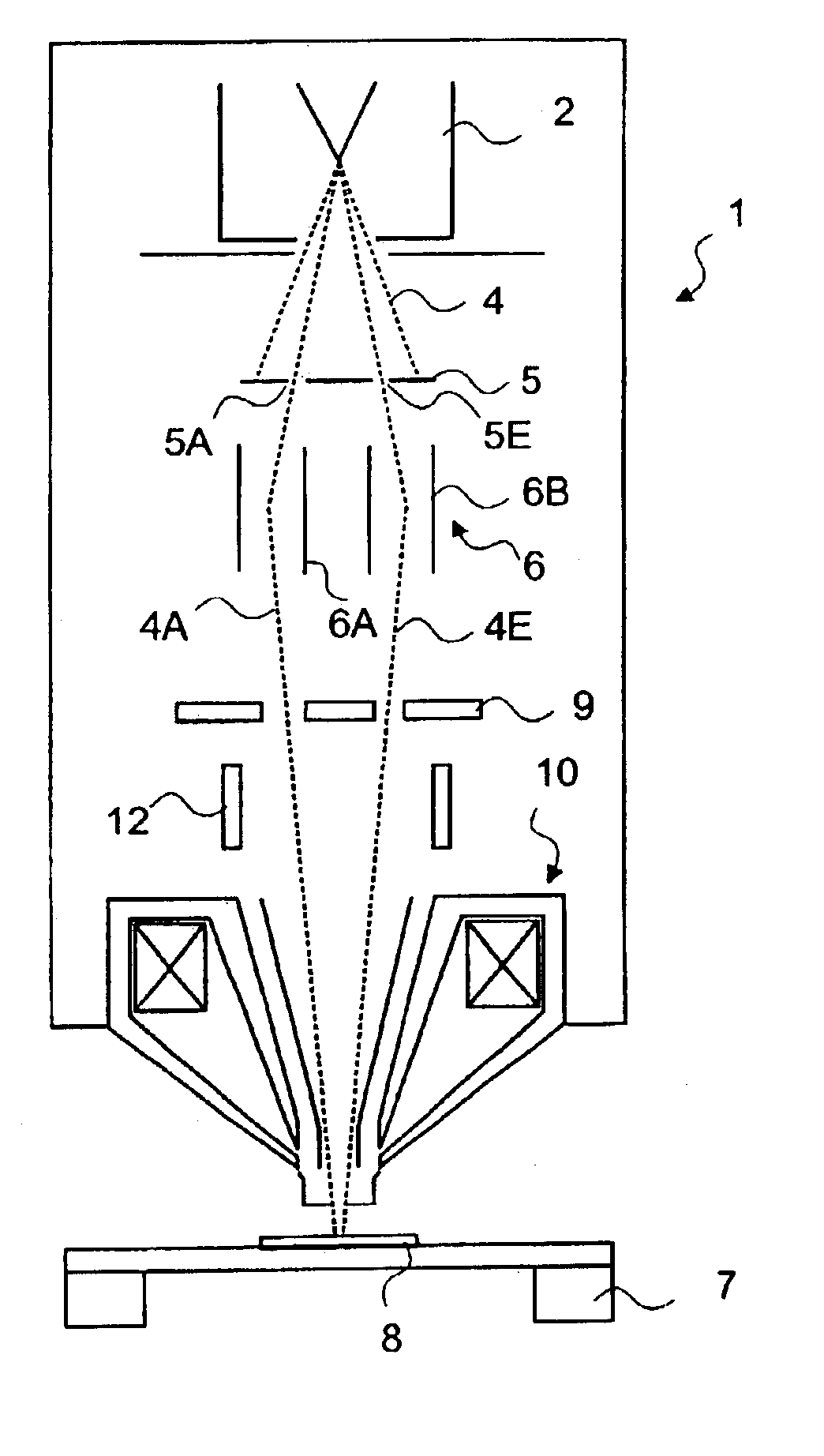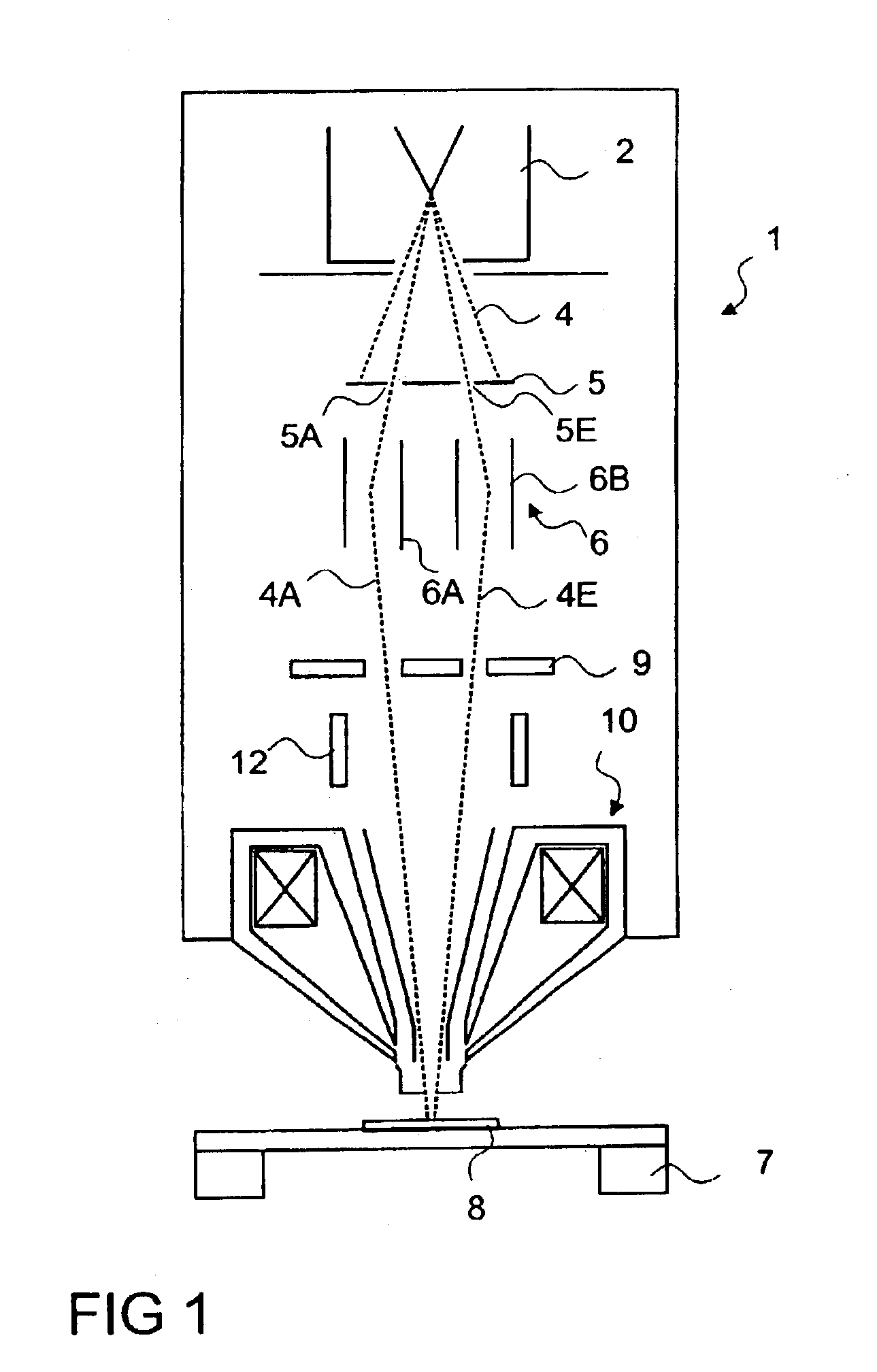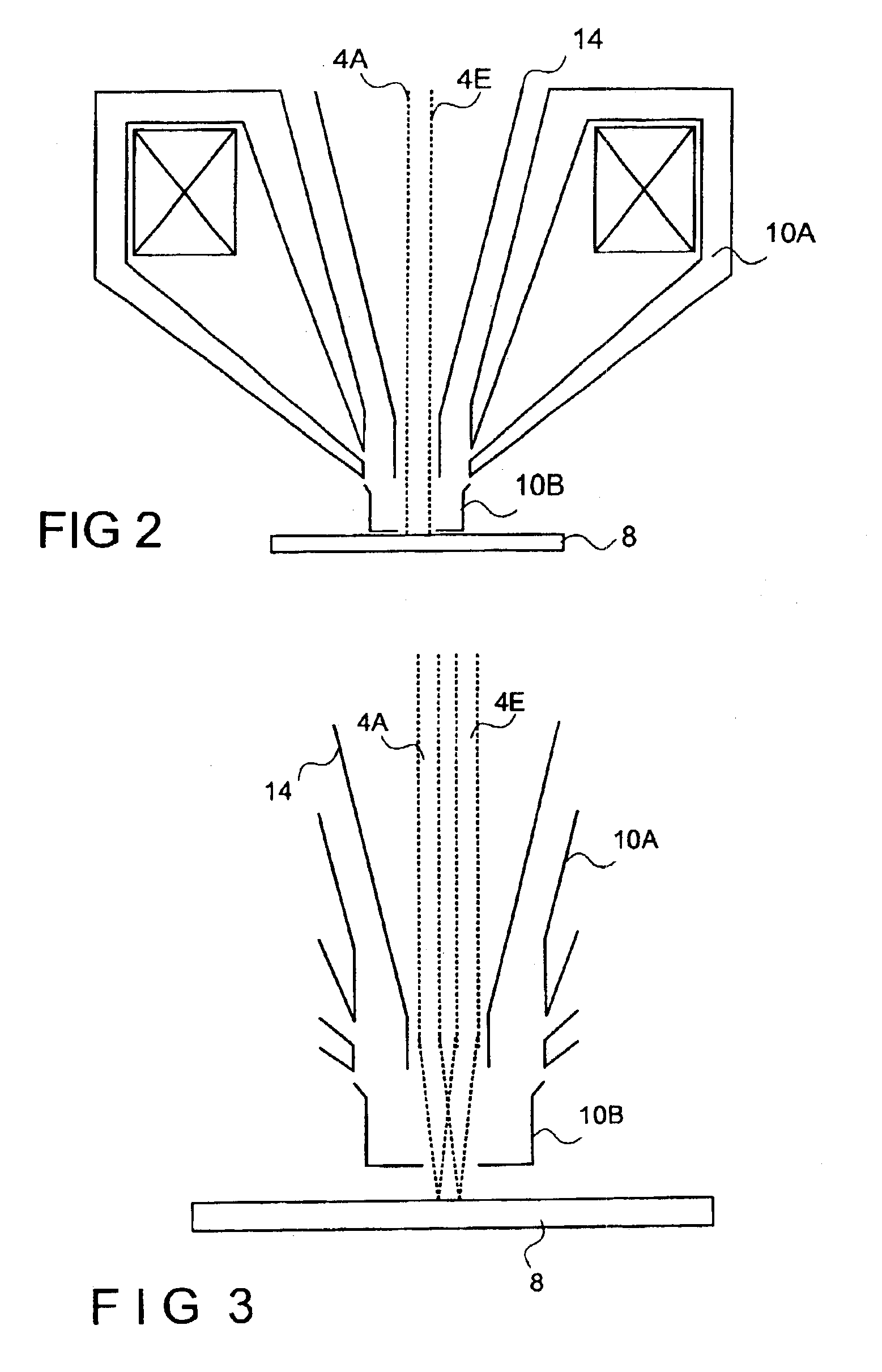Multi beam charged particle device
- Summary
- Abstract
- Description
- Claims
- Application Information
AI Technical Summary
Benefits of technology
Problems solved by technology
Method used
Image
Examples
second embodiment
[0046]FIG. 7 shows schematically a column according to the present invention. This embodiment is similar to that of FIG. 1, except for the following; The column comprises a beam selector 16 located right after the particle source 2. The beam selector 16 comprises a first deflector 16A, aperture plate 16B, a second deflector 16C, and a third deflector 16D. The aperture plate 16B comprises two apertures having two different diameters. After the beam of charged particles leaves the particle source 2, the first deflector 16A deflects the charged particle beam 4 towards one the two aperture in the aperture plate I&B. Thereafter, the second and the third deflector bring the charged particle beam 4 back to its way along the optical axis of the column.
[0047]The aperture plate 15 used in FIG. 7 comprises, in addition to the apertures 15A-15H situated along a ring parallel to the edge of the aperture plate, a further aperture 151 situated in the center of the aperture plate (see FIG. 8). Acco...
third embodiment
[0051]FIG. 10 shows schematically a column according to the present invention. This embodiment is also similar to that of FIG. 1, except for the following; After leaving the charged particle source 2, the charged particle beam 4 passes through the aperture plate 25 having four apertures 25A-25D which are situated at equal distance along a ring on the aperture plate 25. By passing through the aperture plate 25, four charged particle beams 4A-4D are created. Thereafter, the deflectors 26A-26D are used to influence the beams of charged particles 4A-4D so that each beam 4A-4D appears to come from a different source. The deflectors 26A-26D influence each of the beams 4A-4D individually which leads to a better control of the properties of each individual beam.
[0052]The charged particle beams 4A-4D then pass the detector 29 which is used to detect those particles that come from the specimen 8 in order to produce multiple images of the specimen 8. The detector 29 is divided in multiple segm...
PUM
 Login to View More
Login to View More Abstract
Description
Claims
Application Information
 Login to View More
Login to View More - R&D
- Intellectual Property
- Life Sciences
- Materials
- Tech Scout
- Unparalleled Data Quality
- Higher Quality Content
- 60% Fewer Hallucinations
Browse by: Latest US Patents, China's latest patents, Technical Efficacy Thesaurus, Application Domain, Technology Topic, Popular Technical Reports.
© 2025 PatSnap. All rights reserved.Legal|Privacy policy|Modern Slavery Act Transparency Statement|Sitemap|About US| Contact US: help@patsnap.com



